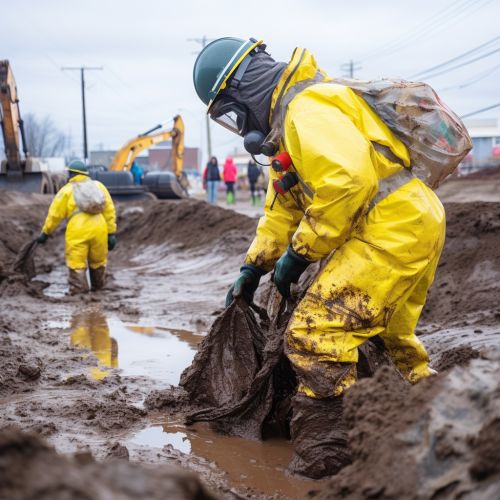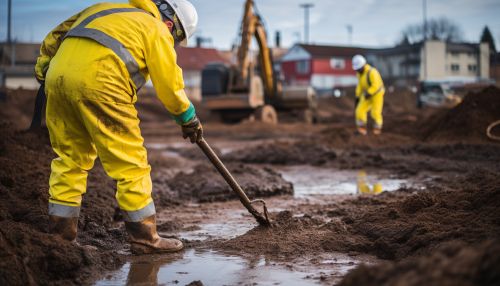Soil remediation
Introduction
Soil remediation, also known as soil washing or soil decontamination, is a process used to remove contaminants, such as hydrocarbons, heavy metals, and pesticides, from soil. This process is an essential component of environmental remediation, the broader effort to protect human health and the environment by cleaning up polluted sites. Soil remediation techniques are used worldwide to improve polluted soil that has been contaminated due to industrial activity, agricultural chemicals, or improper disposal of waste.
Types of Soil Contamination
There are numerous types of soil contamination that require remediation. These include:
- Heavy metal contamination: This occurs when heavy metals, such as lead, mercury, and arsenic, are present in the soil. These metals can be harmful to human health and can also affect plant growth.
- Hydrocarbon contamination: This type of contamination is commonly associated with oil spills or leaks from underground storage tanks. Hydrocarbons can be harmful to both human health and the environment.
- Pesticide contamination: Pesticides used in agriculture can contaminate the soil and make it unsuitable for growing crops. This can also lead to contamination of groundwater supplies.


Soil Remediation Techniques
There are several techniques used in soil remediation, each suited to different types of contamination and soil conditions. These include:
- Bioremediation: This technique uses microorganisms or plants to break down contaminants in the soil. It is often used for organic contaminants, such as oil or pesticides.
- Soil vapor extraction: This method involves the removal of volatile contaminants from the soil by vacuum extraction.
- Thermal desorption: This technique uses heat to increase the volatility of contaminants, allowing them to be more easily removed.
- Chemical oxidation: This method uses chemical oxidants to break down contaminants in the soil.
- Electrokinetic remediation: This technique uses an electric field to move contaminants out of the soil.
Factors Influencing Soil Remediation
Several factors can influence the effectiveness of soil remediation efforts. These include the type and concentration of contaminants, the characteristics of the soil, and the presence of groundwater. The choice of remediation technique is also influenced by these factors, as well as by cost and regulatory requirements.
Environmental and Health Impacts
Soil contamination can have significant impacts on both the environment and human health. Contaminated soil can harm plants and animals, disrupt ecosystems, and contaminate water supplies. For humans, exposure to contaminated soil can lead to a range of health problems, from skin rashes and nausea to more serious conditions like cancer. Soil remediation helps to mitigate these impacts by removing or neutralizing contaminants in the soil.
Future of Soil Remediation
The future of soil remediation lies in the development of more efficient and cost-effective techniques. Advances in biotechnology, for example, could lead to the creation of genetically engineered organisms capable of breaking down specific contaminants. There is also ongoing research into the use of nanotechnology in soil remediation, with the potential to create highly effective, targeted treatments for soil contamination.
